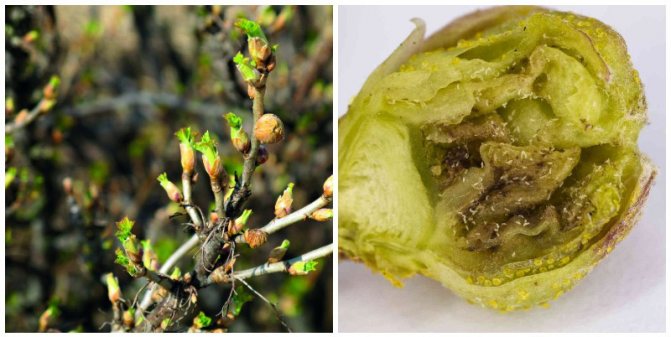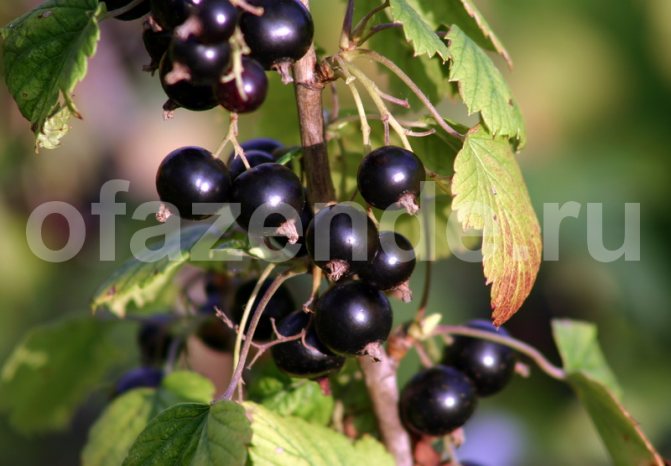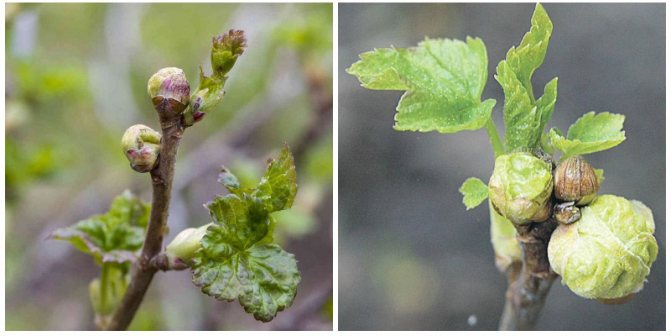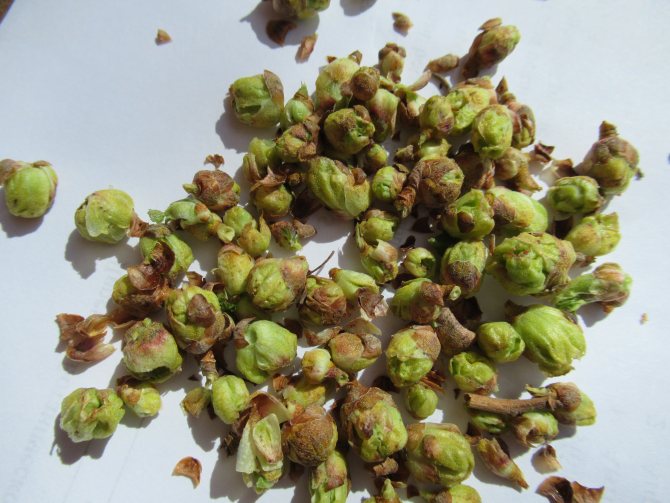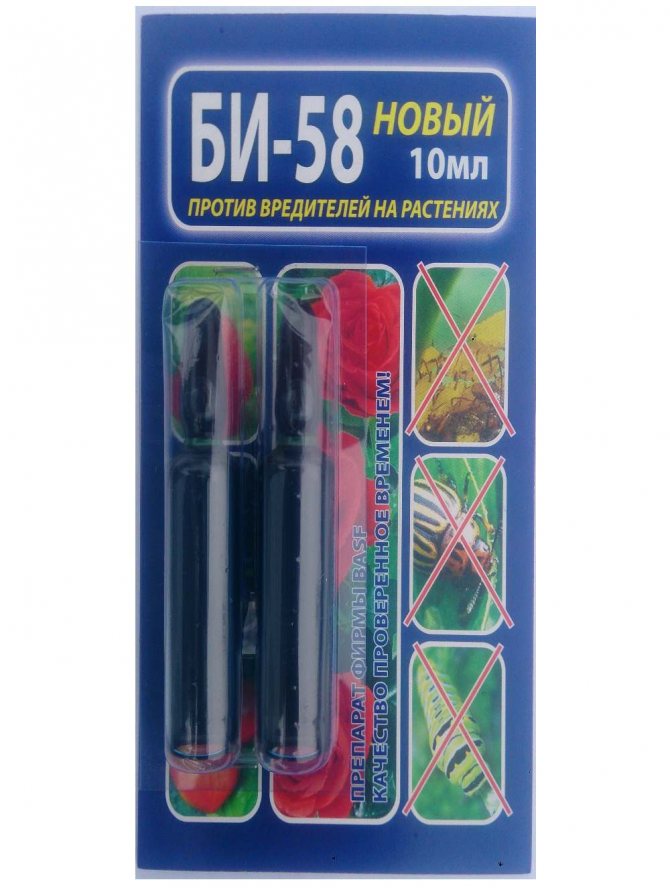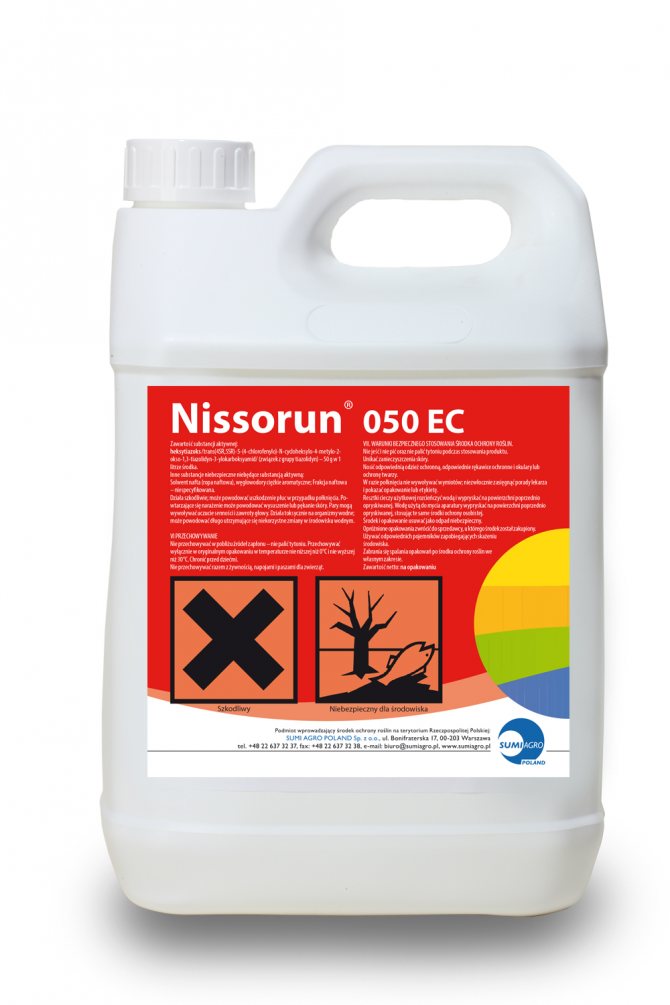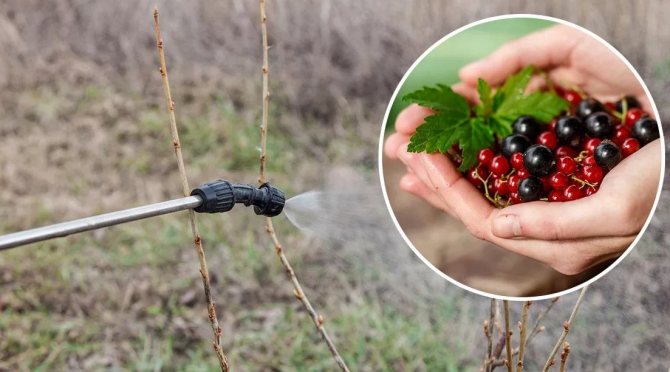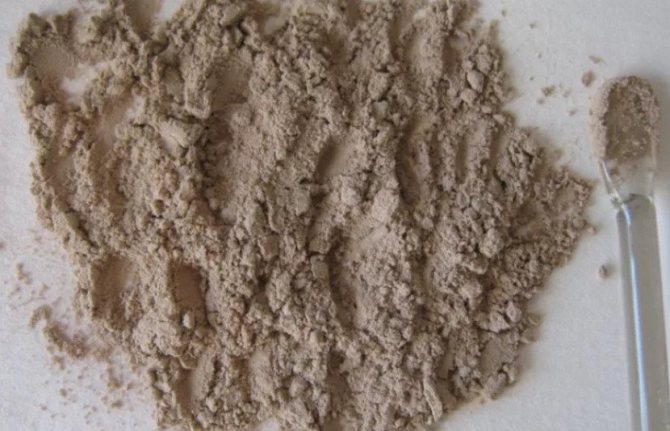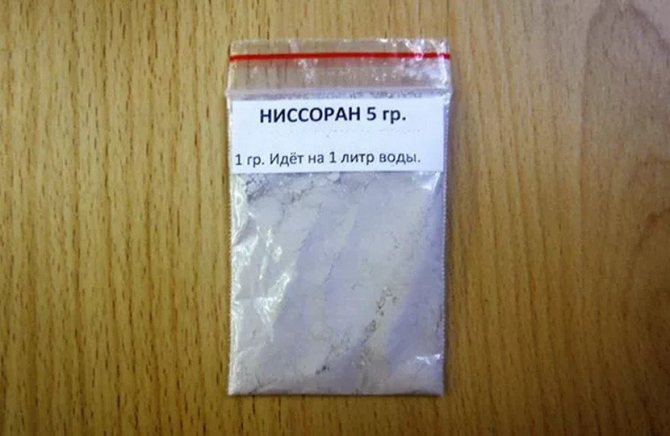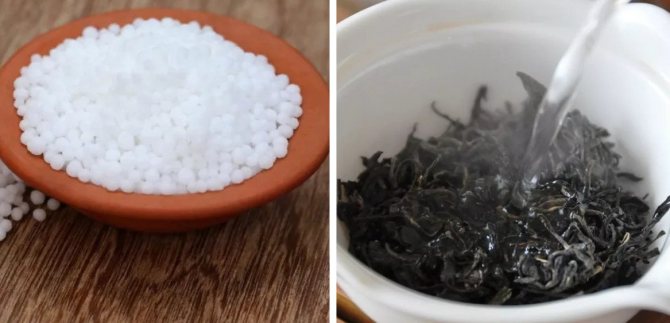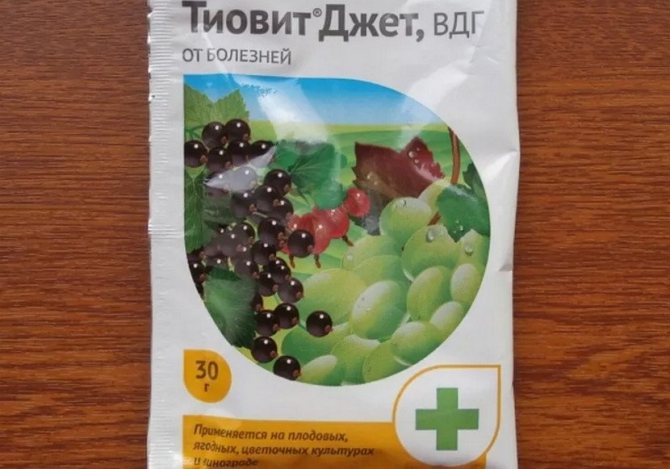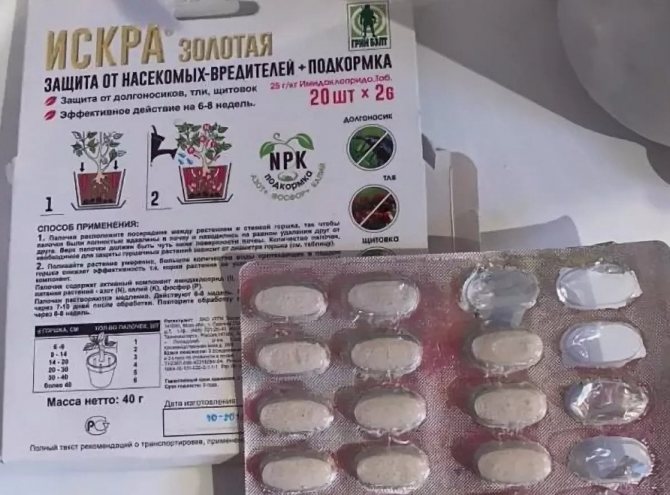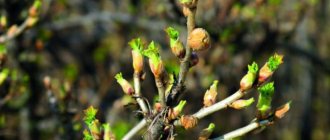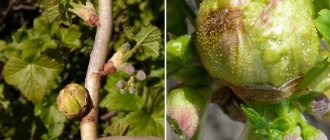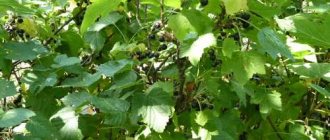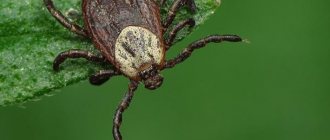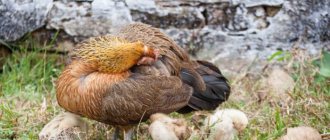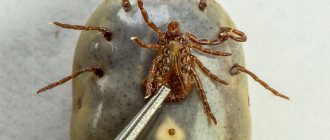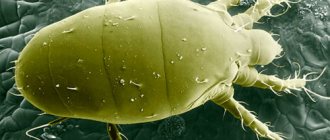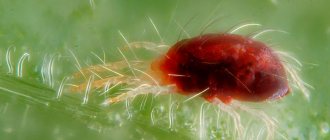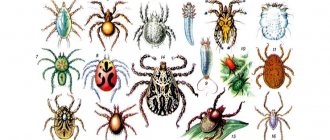Many gardeners and gardeners have repeatedly encountered such a currant pest as a kidney mite. This microscopic insect is only 0.2 - 0.3 mm long. Its very name speaks of damage to the buds of plants.
In early spring, the female kidney mite begins to lay eggs. After two weeks, her offspring are already eating the plants. Ticks from one currant bush move to others, and to gooseberries.
The fact that a kidney mite has started up on the currant is evidenced by swollen kidneys. The buds in their appearance resemble miniature cabbage heads, Their size is about the size of a pea.
Description
A bud mite is one of the harmful insects that prefer to settle on berry bushes, in particular, on currants. Usually this pest affects black currants, however, it is found on red and white ones too.
The size of a kidney mite is microscopic: only 0.2 mm. If this pest has settled on a currant bush, this fact leads to inadequate development of shoots, an ugly shape of the buds, a general sloppy appearance of the plant, uneven flowering, and shedding of unripe berries. The pest makes the bush weak, which makes the latter vulnerable to other harmful insects and diseases.

Kidney mite on currant
The tick is carried through the air: due to its microscopic size, the wind can carry it over considerable distances. In addition, the infection of the bush can occur through birds, insects, and also through infected garden tools.
What the Leningrad giant black currant looks like, and what features of its cultivation exist, is indicated in this article.
But what the Versailles white currant looks like, and what features of its cultivation, you can find out by clicking on the link.
But what a vigorous black currant looks like, and what are the features of its cultivation,
It will also be useful to find out why there is a white bloom on the leaves of the currant.
What does a kidney mite look like?
The harmful insect belongs to the four-legged group of ticks. It is an elongated white worm with 2 pairs of legs. The size of females reaches 0.02 cm, males are several times smaller. That is why it is very difficult to see it on the affected plant. Ticks live in buds and other formations on the plant, thus protecting themselves from bad weather conditions. Pests have a piercing-sucking mouth apparatus, thanks to which they suck the juice from the plant.
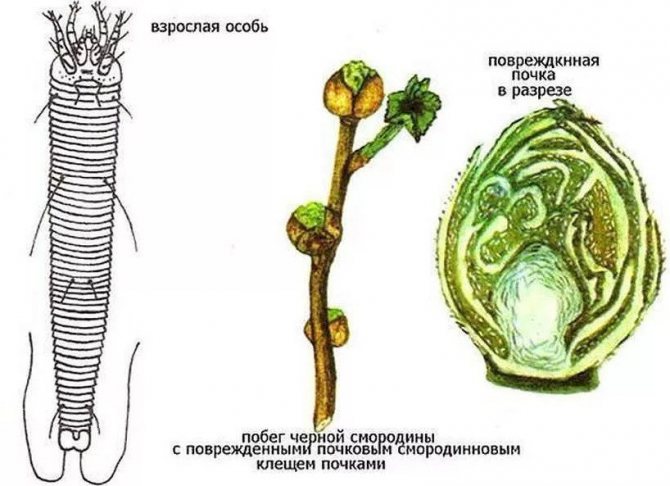

Females of the tick are very fertile: from March to November, one individual can breed up to 5 new generations, which is almost 40 thousand copies... The most active reproduction occurs in the spring, when the air temperature reaches + 5 ° C.
Intrarenal development of larvae lasts 1–2 weeks. After that, they destroy the contents of their native buds and move on to new shoots, flower and vegetative buds. At this point, pests can move to nearby shrubs through wind, birds, rain, or clothing.
Did you know? One kidney can contain 3000
–
8000 ticks. In this case, the kidney swells strongly and in the section resembles a head of cabbage.
Danger of defeat
I must say that the kidney mite harms not only currants, but also gooseberries and even raspberries, therefore, when this insect appears, control measures must be serious.The pest affects the buds of the currant, which are deformed, become more massive, puffy in appearance. Then, from these buds, already initially damaged, weak shoots grow: as you understand, you will not have to expect good yields from such young growth.
In addition to the danger of loss of yield, the bud mite also carries dangerous diseases, including mosaic and double leaves. But how susceptible to pests is the Blackcurrant Pigmy variety, indicated here.
The video shows a description of the problem:
Keep in mind that timely prevention measures are best to control the kidney mite, simply by keeping the pest out of the bushes. If the insect has already strongly struck the currant, the bush cannot be treated: it must be uprooted and urgently destroyed.
Symptoms of defeat
You can recognize a bud mite on a currant in the spring, when the buds of the plant begin to swell. It is this time - the beginning of the activation of the harmful insect. If a healthy kidney is a smooth process of regular elongated shape, then the affected one looks like a short plump and loose cabbage head. The diameter of such a kidney is about 1 cm.
I must say that tick larvae, once in a favorable environment, begin to multiply at a very rapid pace. And in a short period of time, the pest is able to capture almost all the buds on the bush. But how to deal with powdery mildew on currants, and what can be done with this problem with home remedies, is indicated here.
Life cycle characteristic
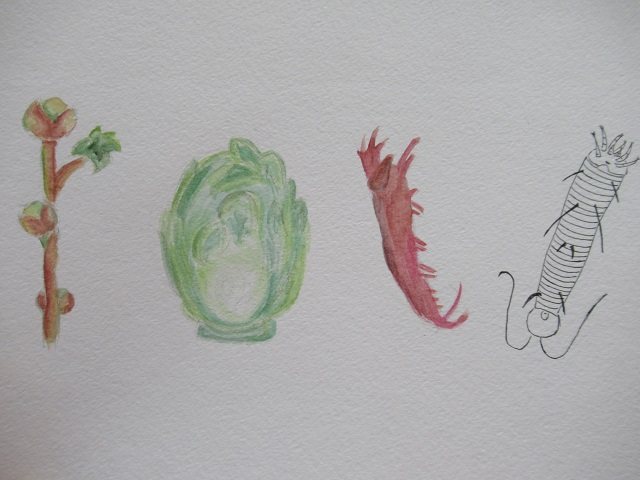

Currant bud, cut currant bud, kidney mite
The spread of pests is carried by the wind, when buying infected seedlings, birds and insects. The female lives on average from 20 to 45 days, while managing to lay up to 10,000 eggs.
The pest of currants is capable of producing several generations per season. At the very end of the flowering of currants, the first generation appears, followed by the second. Until the end of autumn, another 2 - 3 generations may appear.
Control measures
We will find out how you can cope with a kidney mite on currants.
Scalding
This method is one of the most popular due to its simplicity and effectiveness. Scalding currant bushes with boiling water, no matter how barbaric it may look, is a very effective way to prevent and treat a tick, moreover, while the boiling water is transferred to the street, it usually cools down to a temperature that is quite acceptable for the bush.
Before scalding, it is recommended to tie the bushes so that the treatment hits right on target and is more effective. The procedure is carried out before the buds bloom: if you skip this moment, then it will be possible to scald the currants only in the fall, after the foliage has fallen off.
This method is quite effective and, moreover, environmentally friendly. The method has undeniable advantages: all larvae and adult ticks that come under boiling water die, and the bush itself only becomes stronger and healthier. But do not pour boiling water onto the bush: a water temperature of + 60-80 degrees will be quite enough. But how planting and caring for red currants occurs, and how it reproduces, is indicated here.
Collection of kidneys
If the tick has just begun to infect the kidneys, you can collect the diseased specimens by hand. But when harvesting, carefully look at the buds, so as not to remove along with the sick and healthy ones that can give a crop.
Note that the effectiveness of this method is low, and it is better to use it as an additional technique to other, more efficient processing methods.
Sulfur processing
The kidney mite does not tolerate sulfur and preparations containing it. That is why it is possible to fight the pest with the help of these means. It is important to treat currant bushes with sulfur-containing agents until the buds swell.Use a commercially available colloidal sulfur solution for this: it is necessary to carefully observe the proportions when preparing the solution.
Sulfur solution should be sprayed not only on the plant itself, but also on the ground near it: such an extended treatment will be more effective.
Pruning
This is a radical method of struggle, and it is used only when the currants are severely affected by the pest. If it is clear that further treatment is useless, it is recommended to cut the bush under the stump, dig up the roots: burn all this, and disinfect the hole, the soil around and the garden equipment that was used.
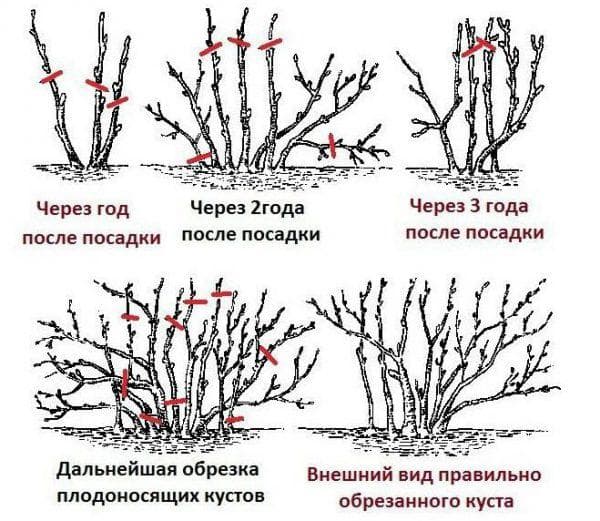

Pruning
If the buds are affected on one or more shoots, it makes sense to cut off these shoots without touching the rest. But how the spring care for black currants takes place, and how best to care for it the rest of the time, is described here.
Acaricides
Of the entire range of chemicals to combat kidney mites on currants, acaricidal substances are used. These are special substances of synthetic origin that are effective against ticks. You should know that treating the bush with ordinary insecticides in this case will give little: these drugs against the tick are ineffective.
It is important that acaricidal preparations can help not only kill the tick, but also other pests. Among the most effective drugs are:
- Apollo;
Apollo - Neoron;
Acaricides Neoron - Oberon;
- Nissoran.
It is necessary to use acaricidal agents in strict accordance with the instructions: it is strictly not recommended to allow an overdose or too strong a concentration of drugs.
Acaricides are most effective when new buds are being born. Namely, when the buds are just beginning to hatch, the tick en masse goes out in search of "new housing". That is, on average, there is about 15-20 days to cope with an adversity, or to warn it.
What do currant buds look like when affected by a tick?
The easiest way to identify the pest is in the fall. Then the affected kidneys swell and differ markedly from the rest.
In the autumn, immediately after leaf fall, two types of buds can be distinguished:
- Healthy kidneys are round, slightly elongated. They do not lag behind in development and are covered with dense scales.
- Sick, deformed, round kidneys that are inflated by a large number of parasites. It is there that pests hibernate.


In spring and summer, affected kidneys can be distinguished by the following features:
- the tops of young shoots are deformed and change color;
- the leaf plate becomes stiffer, acquires a light green or yellow color, while the leaves become smaller due to depletion;
- young growth stops growing;
- berries do not ripen - they remain small and sour;
- fading of the growth of shoots.
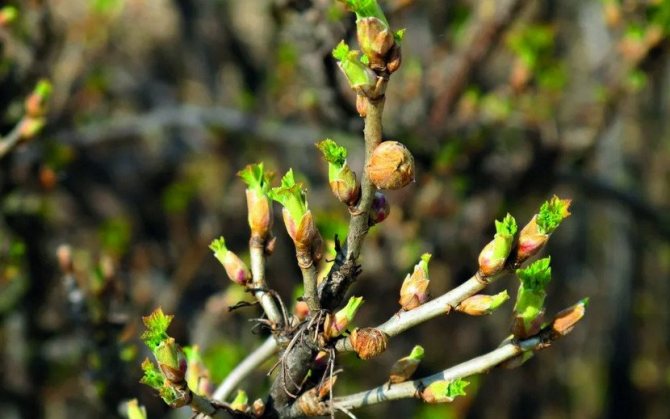

The currant bush is affected by viruses that ticks carry (witch's broom, leaf reversion, double flowers). In this case, the plant urgently needs to be cut and burned, since there is no treatment for such diseases.
Traditional methods
Savvy gardeners use home and folk methods of pest and disease control with might and main, claiming that some of them are much more effective than even chemicals.
Tea brewing
So, to combat the kidney mite on currants, it is recommended to use tea leaves brewed in boiling water. The solution is made as follows: 20 tea leaves are brewed in a bucket of boiling water, after which they insist for a day.
After insisting, young cuttings are placed in the solution for 3 hours, preparing for planting. According to gardeners, after such treatment, the kidney mite does not threaten the currant.
Garlic tincture
This folk method is also used by many gardeners in the fight against ticks.To prepare a tincture of the desired concentration, you need to crush 100 grams of garlic cloves, then dilute the resulting mash in a bucket of water, and immediately start processing the bush.
Attention: the kidney mite does not even tolerate the smell of garlic, therefore, for prevention purposes, this particular spicy vegetable can be planted next to the currant.
In addition to these methods, tinctures of poisonous or bitter herbs can help in the fight against the pest: wormwood, tobacco, dandelion. A decoction of onion peels is also useful: only necessarily concentrated.
Folk methods help only if the tick has not spread too much, or as a means of prevention. If the insect has already managed to multiply strongly, it is necessary to use more aggressive substances, or immediately radical pruning.


